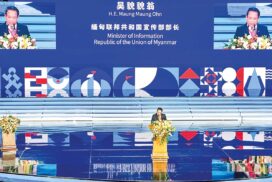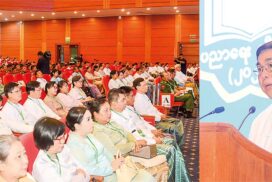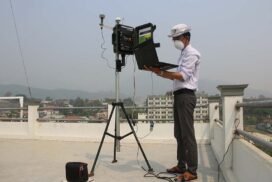Rubber farm owners were facing a shortage of workers when rubber tapping season kicked off, rubber growers said.
As it is the start of the rubber harvest season, rubber sap collection businesses commence. However, the labour shortage threatened the rubber industry, Myanmar Rubber Planters and Producers Association said.
Rubber farms suspend harvest operations in the monsoon season. The tapping season resumed in early September.
“The farm owners had better provide training for tappers before the season. They should also offer incentives for the workers. If they search for rubber tappers only when the season starts, a labour shortage is expected for sure. Those farm owners cannot employ skilled workers at that time. We provide training for workers,” an official from the association gave a remark in an interview with the state-run media.
The rubber tapping business runs nine months a year. Skim latex is coagulated with mild acid and made into a solid and soaked in the water, a rubber worker said.
Among the two types of tapping knives made in Thailand and China, tappers prefer Jabong tapping knives. Some small-scale rubber farmers and workers put capital by half (fertilizer, general cost) and split the profit equally. Some farm owners receive a 60 per cent share, while the remaining 40 per cent goes to workers.
Myanmar shipped over 7,786 tonnes of rubber worth US$11.749 million to foreign markets by the sea in August. The volume of exports stood at 5,410 tonnes to China, over 1,146 to India, over 660 to Malaysia, 480 to the Republic of Korea and 80 to Indonesia.
More than 4,577 tonnes of rubber worth $6.307 million were exported to neighbouring countries via cross-border trade in August, with 4,064 tonnes of rubber to China and over 510 tonnes to Thailand. The overall export volume of rubber totalled 12,360 tonnes of rubber with an estimated value of $18.056 million in August.
Myanmar’s annual rubber production is estimated at 200,000 tonnes per year, with 90 per cent of them going to external markers. Myanmar’s rubber is primarily exported to China, and it is also delivered to Malaysia, Singapore, Indonesia, the Republic of Korea, Japan, China (Taipei) and India. Only eight per cent is local consumption.
Rubber is commonly grown in Mon State and Taninthayi Region. It is cultivated in Yangon and Bago regions and Kayin State. There are over 1.6 million acres of rubber across the country and the production acreage is estimated at only 800,000 acres. —TWA/GNLM
Rubber tapping season kicks off across rubber farms
- September 25, 2022
- 1096














